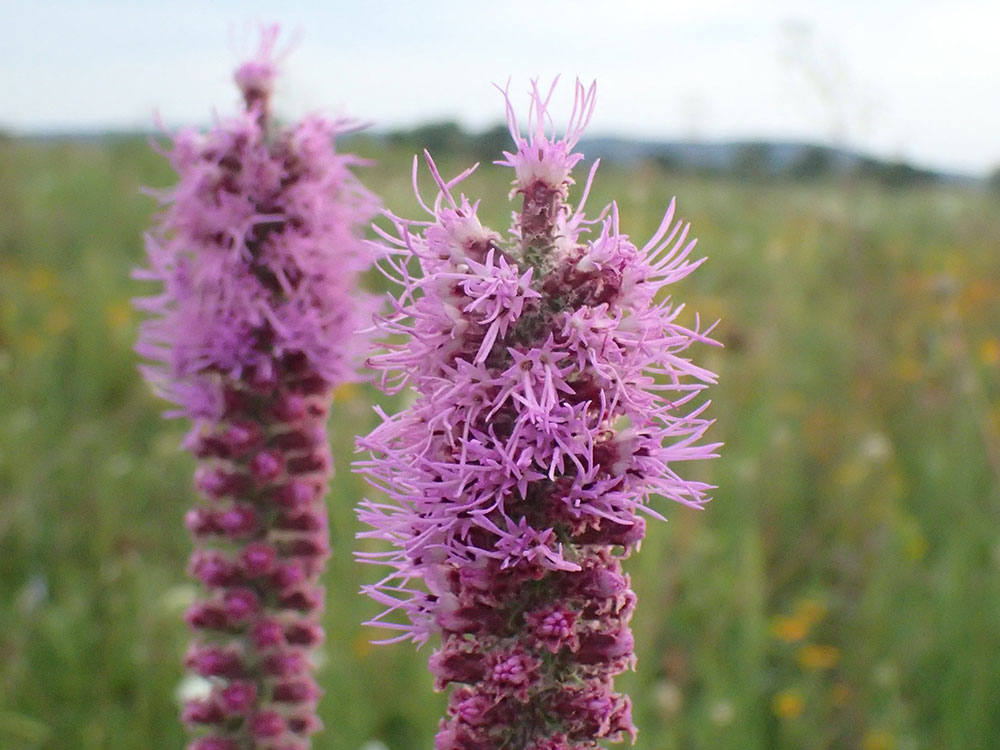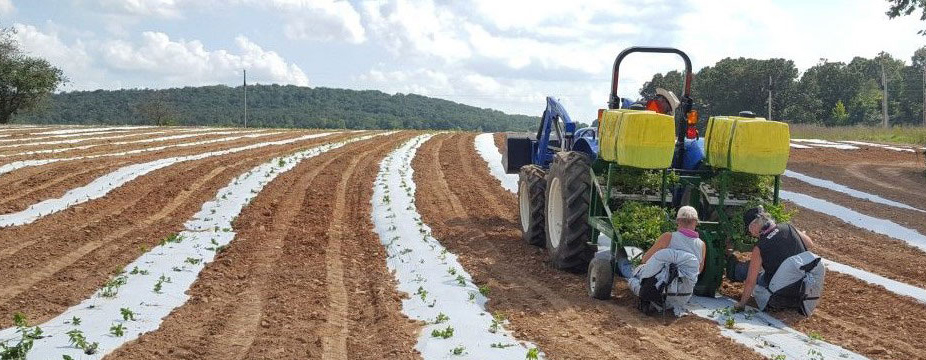ANHC Chief of Research, Theo Witsell, and Arkansas Native Seed Program (ANSP) Coordinator, Jennifer Ogle recently presented the “Natural Areas as Seeds for Restoration: The Arkansas Native Seed Program” webinar through the national, non-profit member association for natural areas professionals, the Natural Areas Association (NAA).
The ANSP officially kicked off in 2016 when the ANHC hosted the first meeting with partners from federal, state, and local agencies, non-profit and private organizations. ANHC staff had been working to establish this type of program for many years, going back at least as far as the beginning of the U.S. Army Corps of Engineers’ Grand Prairie Irrigation Project. The irrigation project brought water to the Mississippi Alluvial Plain of eastern Arkansas, building canals, pipelines, and pumping stations. Over 3,000 acres of canal banks needed to be revegetated, creating an opportunity for the use of native seed on a large scale. However, large-scale local native seed sources were not available at the time. Thus, it became obvious to ANHC staff that the state needed a method to provide and deliver local genotype seeds for use in habitat restoration or habitat improvement plans.
 Restoration projects have had to rely on out-of-state sources, and although these seeds may have been from the right species, they did not have the same genetic make-up as the local populations. This is important because local plants have unique adaptations to specific soils and climate conditions, giving them the best chance of survival. Because these plants naturally occur within an ecosystem, they also benefit native wildlife, preserving an area’s natural heritage.
Restoration projects have had to rely on out-of-state sources, and although these seeds may have been from the right species, they did not have the same genetic make-up as the local populations. This is important because local plants have unique adaptations to specific soils and climate conditions, giving them the best chance of survival. Because these plants naturally occur within an ecosystem, they also benefit native wildlife, preserving an area’s natural heritage.
In 2018, the ANSP received funding from the Arkansas Game and Fish Commission through a U.S. Fish and Wildlife Service Wildlife Restoration Program grant and the ANHC to hire a program coordinator. Ogle was hired as the coordinator and tasked with writing a strategic plan to provide a framework for establishing a native seed industry in Arkansas, determining appropriate seed zones, developing a list of target species, determining current seed demand, and determining research needs.
The funding for the ANSP project ended in June 2020. Much has been accomplished in those two years and much has yet to be done. Going forward, the ANSP is still working to incentivize the use of locally sourced native seed by agencies working in Arkansas, train volunteers to collect seed using established protocols, increase short- and long-term seed storage capacity, and develop sustainable ecotypes of target species.
 The live “Natural Areas as Seeds for Restoration: The Arkansas Native Seed Program” webinar was recorded and is now available to view on the NAA’s YouTube channel. The webinar discusses the history and inspiration for the ANSP, goals, funding, partnerships, seed collection, seed processing, and volunteers. It goes into greater detail about the work that has been completed and future goals for the program. The webinar was made available to view at no cost by the Plant Conservation and Restoration Program at the U.S. Department of the Interior’s Bureau of Land Management.
The live “Natural Areas as Seeds for Restoration: The Arkansas Native Seed Program” webinar was recorded and is now available to view on the NAA’s YouTube channel. The webinar discusses the history and inspiration for the ANSP, goals, funding, partnerships, seed collection, seed processing, and volunteers. It goes into greater detail about the work that has been completed and future goals for the program. The webinar was made available to view at no cost by the Plant Conservation and Restoration Program at the U.S. Department of the Interior’s Bureau of Land Management.
Photos:
Top – H.E. Flanagan Prairie Natural Area. Photo by Theo Witsell.
Middle – Blazing star at Baker Prairie Natural Area. Photo by Leslie Patrick.
Bottom – Planting native seed on a farm in the Ozark Mountains. Photo by Jennifer Ogle.
